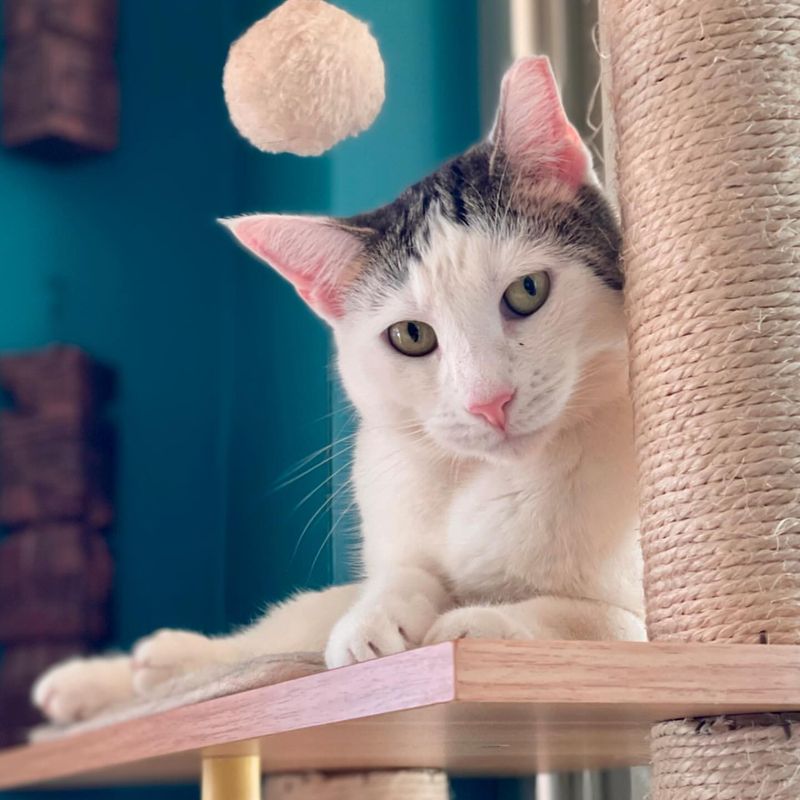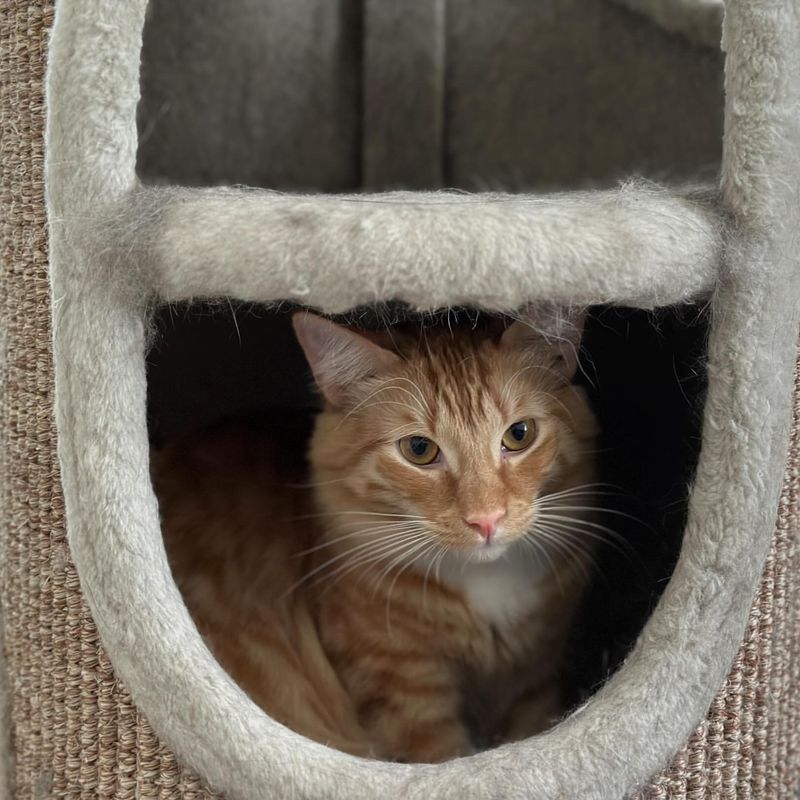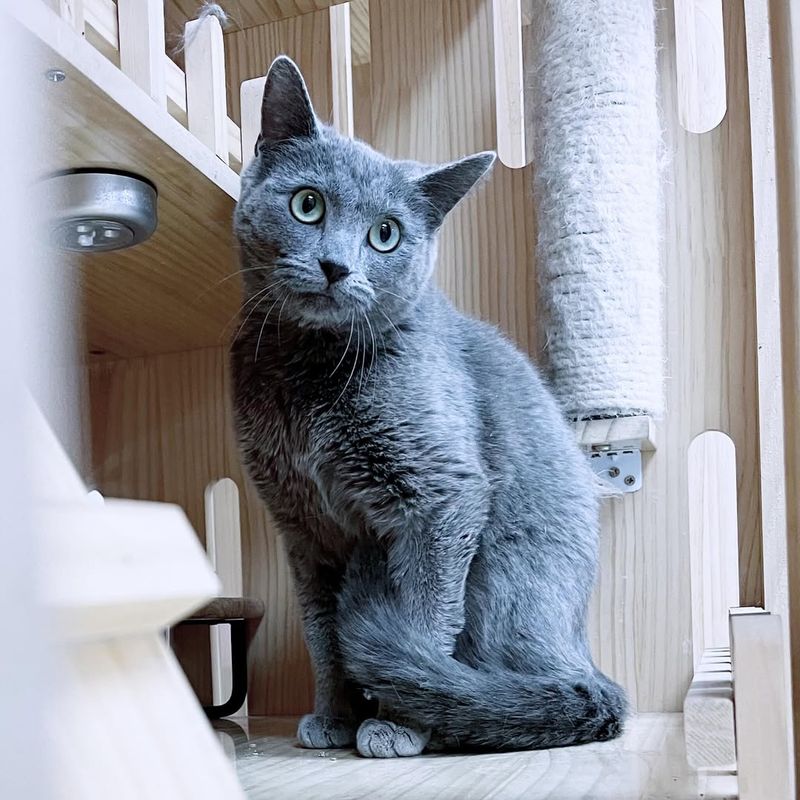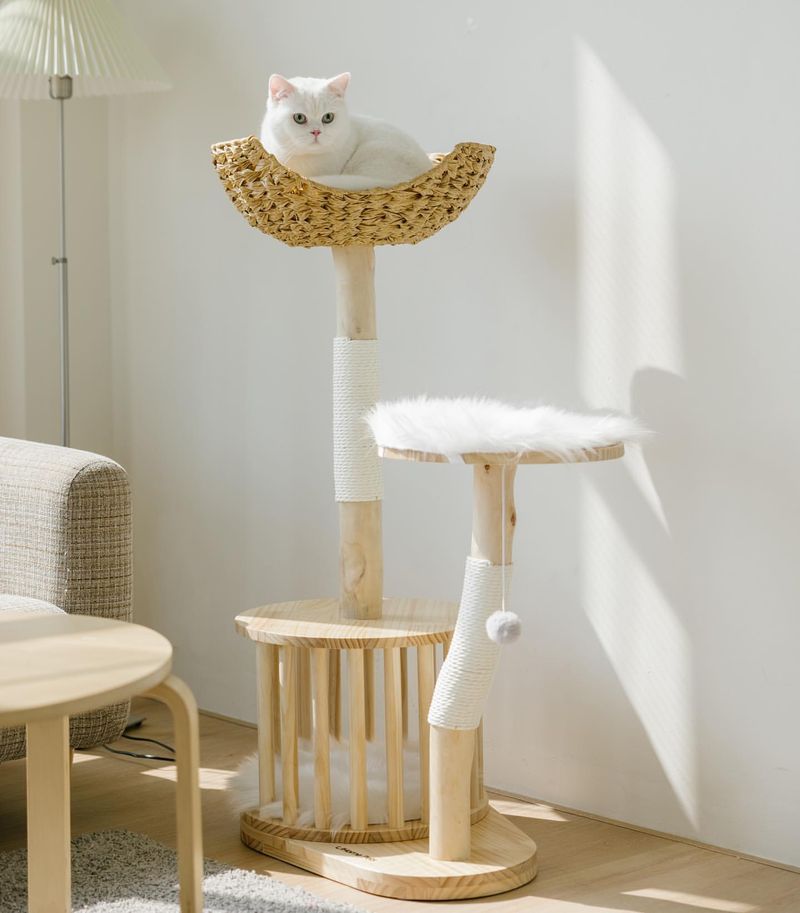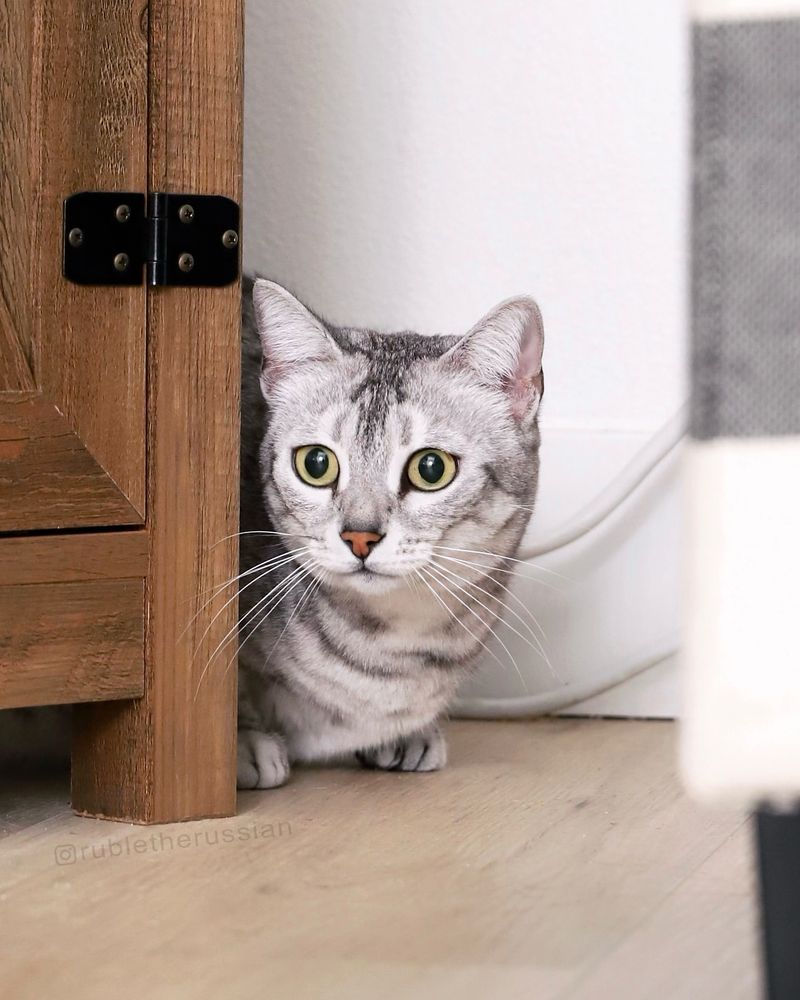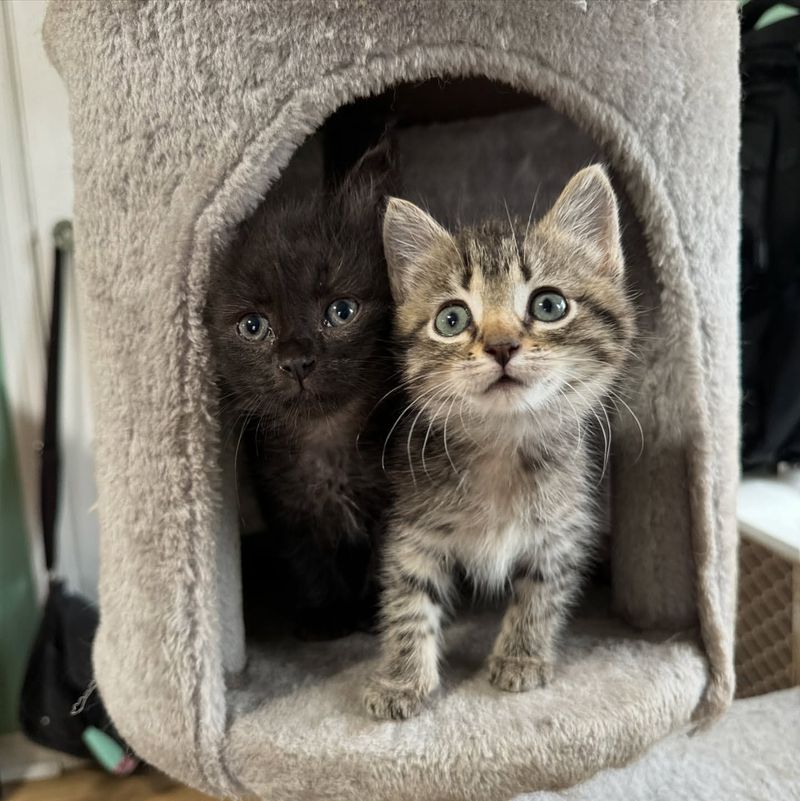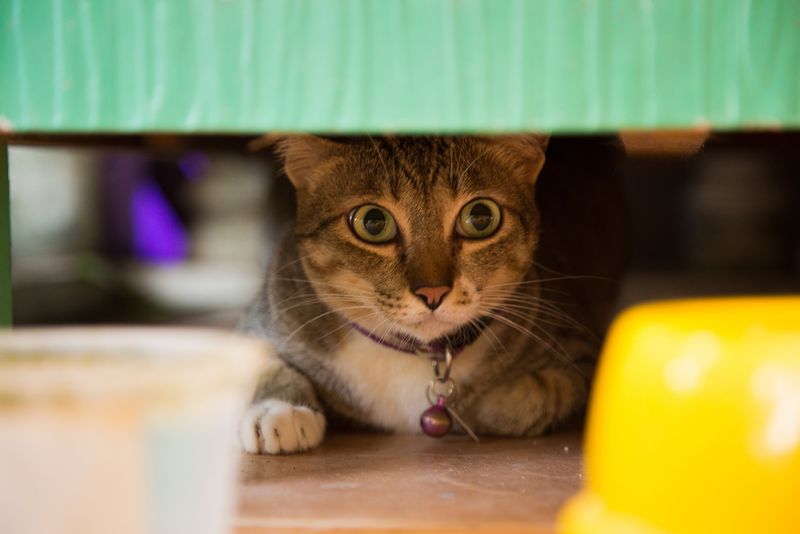📖 Table of Content:
- 1. Create a Safe Space
- 2. Stick to a Routine
- 3. Use Gentle Vocal Cues
- 4. Offer Treats and Rewards
- 5. Engage in Quiet Play
- 6. Respect Their Boundaries
- 7. Provide Vertical Spaces
- 8. Use Calming Scents
- 9. Limit Loud Noises
- 10. Encourage Exploration
- 11. Utilize Familiar Textures
- 12. Adopt a Calm Demeanor
- 13. Provide Interactive Feeding Toys
- 14. Introduce New Experiences Gradually
- 15. Consult a Feline Behaviorist
- 16. Allow Them to Initiate Interactions
- 17. Avoid Startling Your Cat
- 18. Use Positive Reinforcement
Shy cats are like the introverts of the feline world—quiet, cautious, and often hiding in places you didn’t even know existed in your home.
While their hesitance can be endearing, it can also leave you feeling like a distant admirer, patiently waiting for your aloof fluff ball to notice your existence. But don’t worry—there’s hope!
With the right mix of love, patience, and a few clever strategies, you can help your shy kitty feel safe, confident, and maybe even ready to strut their stuff like the fabulous feline they are.
In this article, we’ll explore 18 practical, heartwarming, and totally doable ways to bring your shy cat out of their shell. These tips will help you build trust, strengthen your bond, and unlock the cuddly potential of your cautious companion.
1. Create a Safe Space
Provide a cozy, secure area where your shy cat can retreat. This safe space should include a soft bed, toys, and a scratching post. Placing it near a window can offer natural sunlight and interesting views.
Make sure this area is in a quiet part of your house to minimize stress. Having a dedicated space helps your cat feel in control, which is crucial for their confidence.
Regularly observe your cat to ensure this spot meets their evolving needs, adjusting as necessary to maintain comfort.
2. Stick to a Routine
Establish a consistent routine for feeding, playtime, and rest. Cats thrive on routine and predictability, which helps reduce anxiety.
Try feeding your cat at the same time each day and engage in play sessions that follow a similar schedule. This consistency will help your shy cat feel more secure.
Routines offer reliability and can transform a fearful environment into one of comfort and trust, gradually drawing your cat out of their shell.
3. Use Gentle Vocal Cues
Communicate with your cat using a soft, gentle voice. Encouraging vocal cues can help reassure your cat, making them feel safe around you.
Avoid loud noises or sudden changes in tone, as these can startle and upset a shy cat. Consistency in your verbal communication builds trust over time.
Over time, your cat will begin to associate your voice with safety and affection, fostering an environment of mutual understanding and comfort.
4. Offer Treats and Rewards
Use treats strategically to encourage your shy cat to come out of hiding. Gently toss a treat towards them, allowing them to approach at their own pace.
This positive reinforcement can help build their confidence. Be patient and let them set the pace; forcing interaction can be counterproductive.
Over time, your cat will begin to associate your presence with positive experiences, gradually reducing their fear.
5. Engage in Quiet Play
Involve your shy cat in low-intensity play sessions using toys like feather wands or soft balls. These activities can engage their natural instincts without causing stress.
Keep the play gentle and avoid overwhelming them. The goal is to stimulate interest and create positive associations with interaction.
Regular play not only helps with confidence but also provides a healthy outlet for energy and curiosity, which are vital for emotional development.
6. Respect Their Boundaries
Understanding and respecting your cat’s boundaries is crucial. Allow them to approach you on their own terms, and never force interaction.
Observe their behavior to learn their comfort levels and adjust your actions accordingly. This respect fosters trust.
By acknowledging their space and decisions, you create an environment where your cat feels secure to explore interactions at their own pace.
7. Provide Vertical Spaces
Install vertical spaces like cat trees and shelves. These areas give your shy cat a sense of security and control over their environment, which is comforting.
Cats naturally enjoy heights as it allows them to observe their surroundings without feeling threatened.
Encouraging vertical exploration can help boost confidence as your cat gets comfortable navigating their domain from these safe vantage points.
8. Use Calming Scents
Incorporate calming scents such as lavender or chamomile around your home. These can help reduce stress and promote a sense of tranquility for your shy cat.
Diffusers or sprays designed specifically for pets are ideal, as they ensure safety while maintaining an environment conducive to relaxation.
By integrating these scents, you can create a soothing atmosphere that encourages your cat to feel at ease in their surroundings.
9. Limit Loud Noises
Create a quiet home environment to help your shy cat feel more at ease. Minimize loud noises by using rugs to absorb sound and keeping windows closed against external noise.
Soft background music can also help mask sudden sounds that might startle your cat.
By controlling the auditory environment, you can significantly reduce stress levels, allowing your cat to relax and become more sociable over time.
10. Encourage Exploration
Encourage your shy cat to explore by providing an engaging environment filled with tunnels, boxes, and varied textures. These elements stimulate curiosity and offer safe exploration opportunities.
Each small adventure helps build your cat’s confidence, allowing them to gradually expand their territory at their own pace.
As your cat becomes more comfortable with their surroundings, they’ll grow more willing to interact and show their personality.
11. Utilize Familiar Textures
Introduce familiar and comforting textures such as soft blankets and woven fabrics. These provide warmth and a sense of security for your shy cat.
Position these items in your cat’s favorite resting spots, creating a consistent environment that they can always count on for comfort.
Textures play a significant role in making spaces feel inviting, encouraging your cat to relax and spend more time in communal areas.
12. Adopt a Calm Demeanor
Maintain a calm and relaxed demeanor around your shy cat. Your energy can significantly impact their comfort level, so avoid sudden movements or loud expressions.
Approach them slowly and allow them to initiate contact. This approach demonstrates respect for their space and can enhance their trust in you.
Over time, your consistent calmness will encourage your cat to mirror your relaxed state, leading to more open interactions.
13. Provide Interactive Feeding Toys
Introduce interactive feeding toys to stimulate your shy cat’s mind while rewarding them with treats. These toys encourage problem-solving and can be a rewarding distraction.
The mental engagement helps to alleviate anxiety and offers a fun way to gain confidence in their abilities.
This combination of mental stimulation and positive reinforcement is a great strategy for helping your cat grow more comfortable and self-assured.
14. Introduce New Experiences Gradually
Present new experiences to your shy cat gradually, allowing them time to adjust. Whether it’s a new room or a visit to the vet, introduce changes slowly and with plenty of familiar comforts.
This method prevents overwhelming them and ensures they associate experiences with positive outcomes.
Each successful adaptation to a new experience builds their confidence, enabling them to handle future changes with increased ease.
15. Consult a Feline Behaviorist
If your shy cat continues to struggle despite your efforts, consider consulting a feline behaviorist. These professionals can offer tailored advice and strategies based on your cat’s specific needs.
Their expertise can provide insights into underlying issues you may not be aware of and suggest effective solutions.
Working with a behaviorist can be a valuable step in helping your cat overcome shyness and lead a more confident, happy life.
16. Allow Them to Initiate Interactions
Cats, especially the timid ones, need to feel in control of their surroundings. Allowing them to take the first step in approaching you can build their trust. Picture this: a cautious cat peeking from behind the sofa, judging the safety of the room.
By staying still and avoiding direct eye contact, you offer the cat an opportunity to move closer at their own pace. This approach gives them the confidence to explore without pressure.
Over time, these small steps can lead to a more trusting relationship, where your feline feels safe and secure in your company.
17. Avoid Startling Your Cat
Creating a serene atmosphere is key to making a shy cat feel at ease. Loud noises and sudden movements can frighten them, sending them into hiding. Imagine a peaceful room filled with soft lighting and gentle sounds.
Keeping the environment calm helps your cat feel secure. Speak in quiet tones and move slowly to avoid startling them.
This gentle approach not only reduces their anxiety but also encourages them to stay visible, increasing their comfort with their surroundings. Gradually, they’ll associate calmness with your presence, leading to a stronger bond.
18. Use Positive Reinforcement
Positive reinforcement can be a game-changer for shy cats. Rewarding them with treats or affection when they show bravery encourages future social behavior. Picture a cat cautiously stepping out of its hiding spot, greeted by a gentle hand offering a tasty treat.
This rewarding experience makes the cat associate positive feelings with social interaction. Through consistent encouragement, shy cats can learn to connect enjoyable moments with being near people.
Over time, this method can transform a hesitant cat into a more open and affectionate companion.

